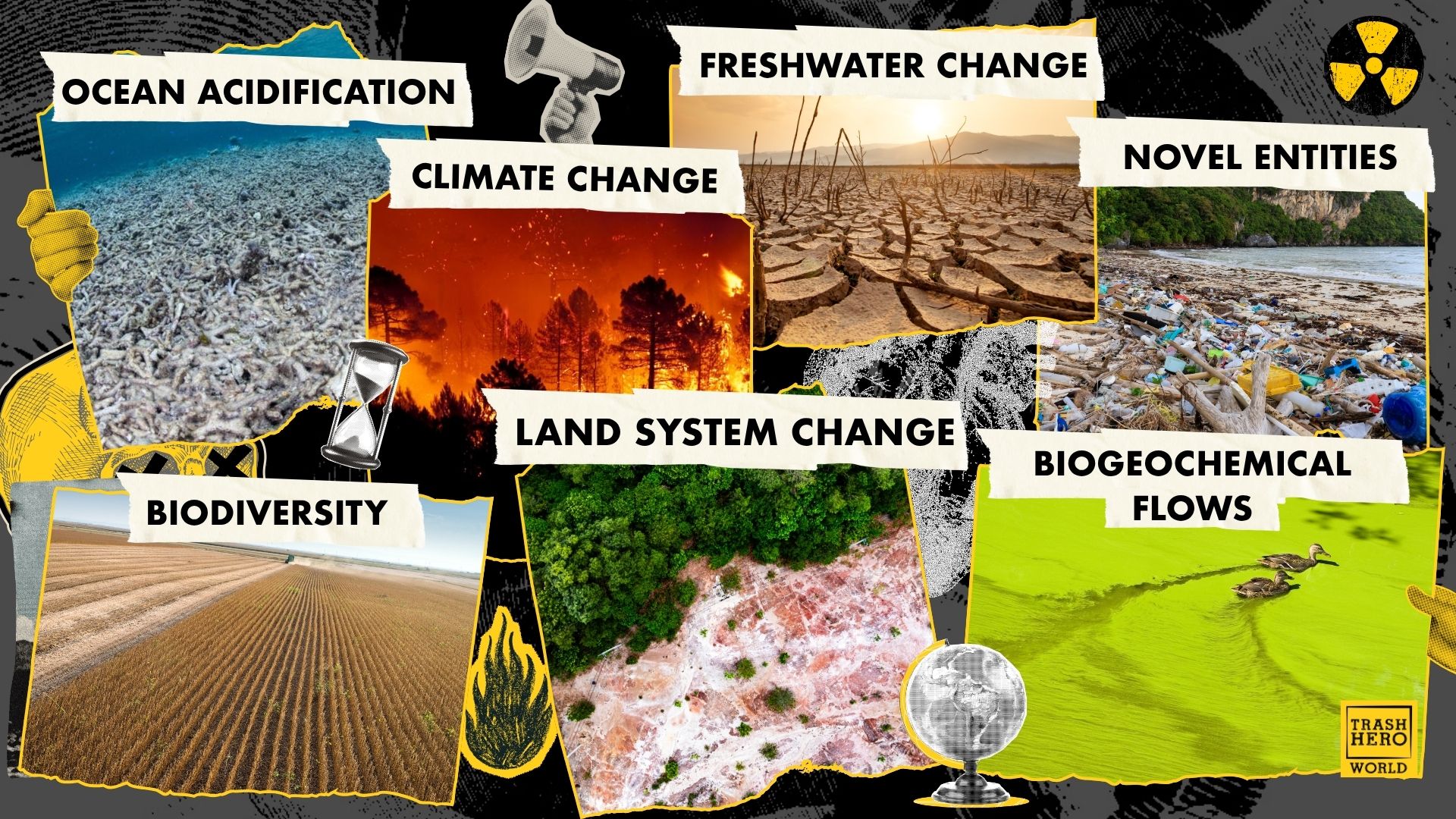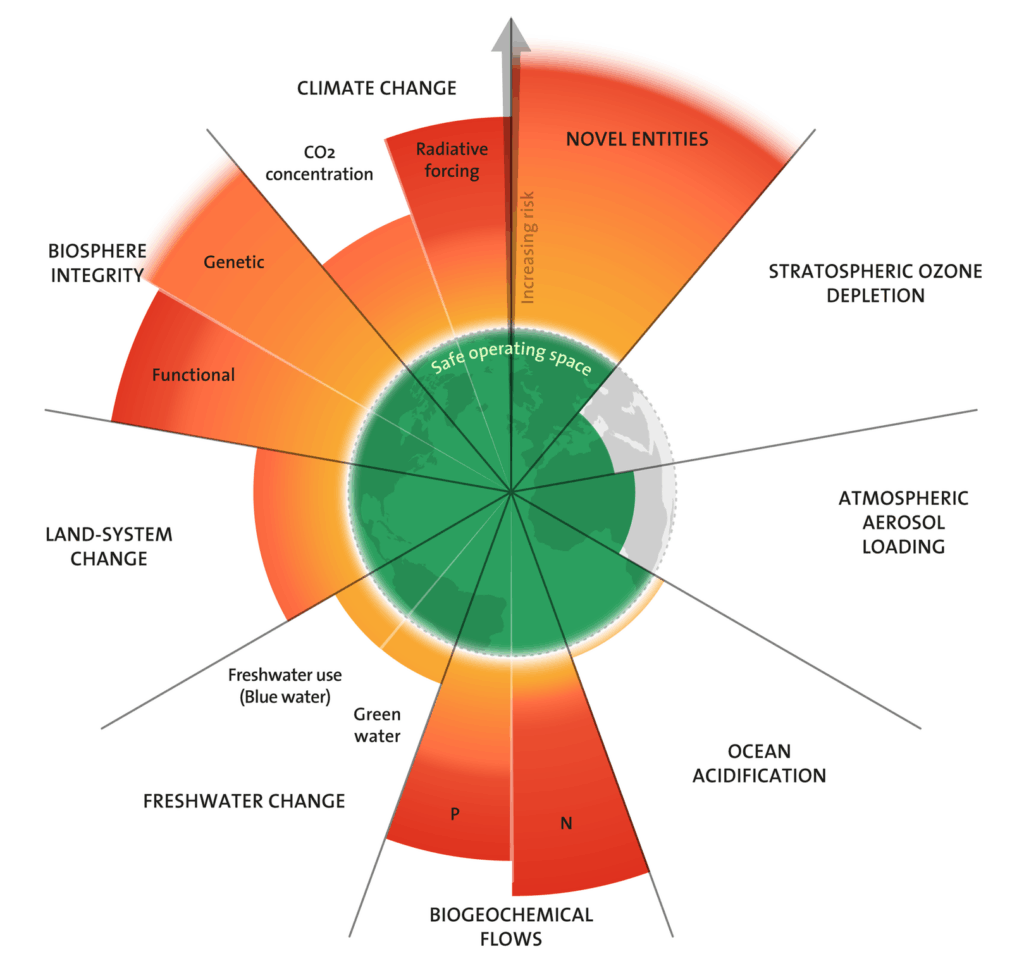During the Holocene epoch, spanning the last 10,000 years, conditions on Earth have been remarkably stable. That stability allowed human societies to flourish: grow food, trade and build cities. But as unchecked capitalism pushes the planet beyond its safe limits, we risk tipping it into instability, with consequences for every living being.
Last month, scientists confirmed that humanity has now crossed seven of the nine planetary boundaries – thresholds beyond which the Earth’s environment can no longer self-regulate and may become unliveable.
But what exactly are these boundaries, and why does crossing them matter?
The concept of planetary boundaries was first introduced in 2009 by a group of internationally renowned environmental and Earth system scientists. The framework identifies nine critical processes that together form the planet’s life support system, regulating its stability and resilience. Each process has a “safe operating space”, the conditions that ensure the system works smoothly.
Leaving this space doesn’t mean immediate catastrophe, but it increases the risk of abrupt, non-linear and potentially irreversible environmental change. In other words, the further we push past these limits, the more likely we are to trigger tipping points that could undermine the very systems on which we depend for survival.
The nine planetary boundaries and where they stand in 2025
1. Climate change ➡︎ boundary exceeded
Our climate system regulates temperature, rainfall patterns, sea levels and the functioning of ecosystems. Human-driven greenhouse gas emissions, especially carbon dioxide and methane, and airborne pollutants are trapping heat in the atmosphere that would otherwise have escaped into space, pushing global temperatures well beyond the stable Holocene range.
How this manifests: extreme weather events, flooding, wildfires, rising sea levels, desertification. The rate of ocean warming has doubled over the past 20 years.
2. Novel entities (chemicals and plastics) ➡︎ boundary exceeded
This category includes petrochemicals, all types of plastics, genetically modified organisms and other synthetic substances that are not biocompatible and often very harmful to living things. Many persist in the environment, forming toxic cocktails and contaminating entire ecosystems.
How this manifests: widespread pollution from micro- and nanoplastics and PFAS (“forever chemicals”) in the water, air and soil.
3. Stratospheric ozone depletion ➡︎ currently within the safe zone.
The ozone layer shields life on Earth from harmful ultraviolet radiation from the sun. International action to reduce the production of ozone-depleting chemicals since the late 1980s and through the Montreal Protocol has successfully helped the layer to recover to within a safe operating space.
4. Atmospheric aerosols (air pollution) ➡︎ globally within the safe zone; exceeded in some regions.
Aerosols are tiny airborne particles such as dust, soot, sulphates and smoke. They affect air quality, human health, and regional climate patterns. This boundary is currently exceeded in many densely populated areas, especially those with heavy industrial and fuel incineration emissions, but globally is considered within safe limits.
How this manifests: increased respiratory and other disease, exacerbation of climate change, changes to monsoon systems. One out of five early deaths is due to fossil fuel air pollution.
5. Ocean acidification ➡︎ boundary exceeded
The oceans absorb carbon dioxide from the atmosphere. This makes seawater more acidic, which prevents corals, shellfish and some plankton from building and maintaining shells and skeletons, with devastating knock-on effects for those further up the food chain – including coastal communities. In the 2025 Planetary Health Check, the ocean was found to have increased in acidity by 30-40% since the start of the industrial era, making it the seventh boundary now judged to be in the danger zone.
How this manifests: coral bleaching and death of tropical reefs, Arctic marine life under threat, food insecurity.
6. Biogeochemical flows ➡︎ boundary exceeded
This process describes how essential elements and compounds cycle through the Earth’s systems. Nitrogen and phosphorus are key nutrients for crops, but their overuse in industrial fertilisers has led to pollution, soil degradation and so-called dead zones in oceans and lakes.
How this manifests: algal blooms caused by fertiliser run-off deplete oxygen and kill aquatic life, increased ocean acidification, infertile soil. There are currently more than 500 identified ocean dead zones, covering 95,000 square miles.
7. Freshwater change ➡︎ boundary exceeded
Freshwater availability and flow – both above, in and below the ground – are essential for agriculture, human consumption, and ecological stability. Pollution, dams, land conversion, over-abstraction and climate change have led to freshwater ecosystems being degraded in half the world’s countries.
How this manifests: droughts, floods, degradation of water quality, loss of wetlands and mangroves. 25% of freshwater species are facing extinction.
8. Land-system change ➡︎ boundary exceeded
Around three quarters of natural landscapes on our planet have been “modified” for human use over the past millennium. This involves permanent changes such as urbanisation and potentially reversible changes such as the clearance of tropical rainforests for agriculture such as soy and palm oil.
How this manifests: soil erosion and degradation, habitat destruction, desertification, forced migration, increased global warming. Global forest cover is now far below the 75% safety zone.
9. Biosphere integrity (loss of nature and biodiversity) ➡︎ boundary exceeded
The biosphere is the living layer of Earth and requires a large, broad and diverse range of healthy organisms to underpin food production, pollination, disease regulation and countless ecosystem services. Biodiversity loss means the system is less able to self-regulate and recover from shocks.
How this manifests: poor crop yields (and food insecurity), accelerating species extinctions, ecosystem collapse.
A wake-up call, not the end
These processes are all interconnected. Pressure on one will inevitably lead to pressure on the others.
Crossing the seventh planetary boundary means that humanity is accelerating the deterioration of Earth systems, and moving further away from the stable conditions that made civilisation possible.
Unsurprisingly, having more than 3/4 of the lights on the dashboard flashing red increases whole system risks: we can expect to see more frequent extreme weather events, reduced resilience of ecosystems, greater water and food insecurity, and the possibility of triggering tipping points such as ice sheet collapse or rainforest dieback.
Yet the planetary boundaries framework is not a prediction of inevitable disaster; it is a risk management tool. We can use it to build momentum to bring systems back into the safe zone. The two intact boundaries are testament to this. Stratospheric ozone depletion – once close to its limit – has been brought back within a safe operating space, thanks to decades of international cooperation through the Montreal Protocol. Collective action on the other processes, which requires deep and rapid cuts in fossil fuel use (for both energy and plastics), can bring back Earth systems within safe limits – but the clock is ticking.
As Johan Rockström, Professor in Earth System Science, who led the development of the planetary boundaries framework says: “even if the diagnosis is dire, the window of cure is still open. Failure is not inevitable; failure is a choice. A choice that must and can be avoided.”
Read the full report: Planetary Health Check 2025



Join the conversation